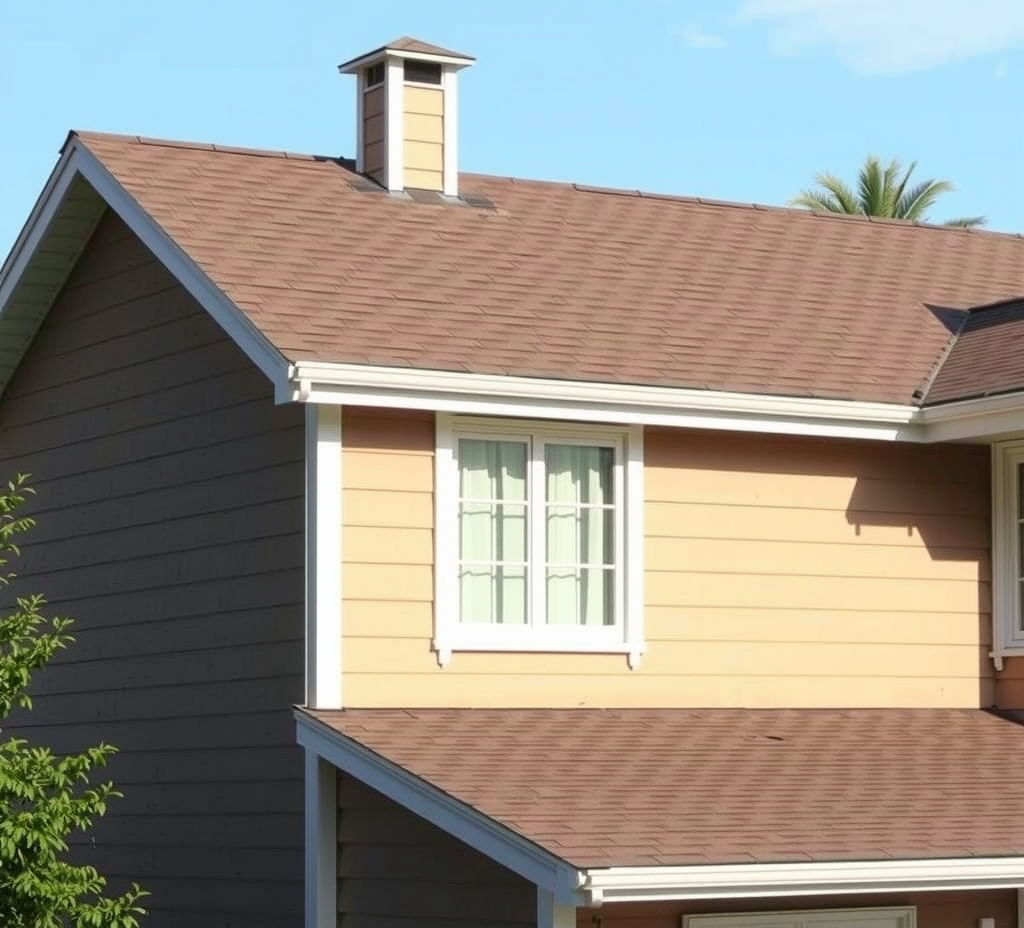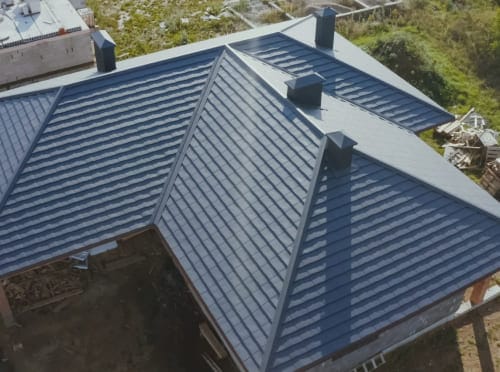Imagine stepping into your attic on an August afternoon only to be greeted by furnace-like heat—or discovering water stains and ice dams after a January Nor’easter. In Connecticut and Massachusetts, where summers swing from hot and humid to winters of snow and ice, proper roof ventilation is the key to preventing these extremes from wreaking havoc above your ceiling.
At JP Carroll Roofing, we’ve seen firsthand how balanced airflow in the attic protects your home’s structure, boosts energy efficiency, and extends the life of your roof. This guide will explain in everyday language what roof ventilation is, why it matters for New England homeowners, and how to keep your system working smoothly—so you can rest easy all year round.
Proper Roof Ventilation: What It Is and Why You Need It
Roof ventilation is simply the controlled flow of air into and out of your attic. It uses intake vents (soffit, drip-edge, or gable vents) to bring cool air in and exhaust vents (ridge, box, turbine, or powered vents) to push hot, moist air out.
In summer’s hot climates, this airflow prevents the attic from turning into an oven, which would otherwise drive up air conditioning costs and accelerate roof aging. On a 90°F summer day, a well-ventilated attic might sit near 100°F, while a poorly ventilated one can top 150°F—straining your HVAC and costing you.
In winter, balanced ventilation keeps your attic’s ambient temperatures close to outside levels, reducing ice dam formation and moisture buildup that leads to rot and mold.
A top-performing system includes the following:
- Soffit vents are intake vents commonly used to usher cool air into the attic
- Drip-edge vents are a great alternative for older homes or where soffit space is limited
- Ridge vents are ideal for continuous, unobtrusive exhaust along the roof’s peak, particularly effective in preventing ice dams
- Box vents are helpful on smaller roofs or in conjunction with other vent types
- Solar-powered, turbine, and power vents are technologically advanced options that actively expel hot air, thus well-suited for homes in regions with variable weather
The combination of intake and exhaust vents should be selected based on your specific roof design. For every square foot of attic floor space, you need about 1 square foot of net free vent area—split evenly between intake and exhaust.
An ideal roof system also takes into account the seasonal extremes in Massachusetts and Connecticut, your attic size, and roof slope.
What Happens If You Don’t Fix Roof Ventilation Issues?
There are many potential dangers—and costly repairs—associated with poor roof ventilation, including the following:
- Structural damage: Moisture can infiltrate wood beams and attic insulation, leading to wood rot and mold. Moisture also reduces the effectiveness of your insulation.
- Electrical risks: Electrical hazards can occur if condensation weakens structural beams and wiring, creating safety hazards. Higher HVAC wear and tear can also occur, leading to costly repairs.
- Damaged shingles and roofing material: High-tech roofing materials and premium shingles can resist UV and weather damage, but none can eliminate trapped heat or moisture beneath the surface. Without proper ventilation, roofing materials, like shingles or synthetic underlayments, can degrade over time. Extreme temperature swings and persistent moisture can accelerate the deterioration of roofing materials.
- Voided warranties: Manufacturers often include specific ventilation requirements in their roofing warranty agreements. Poor ventilation can lead to issues such as premature aging of roofing materials or moisture damage, potentially voiding your warranty.
How Proper Roof Ventilation Affects Your Energy Bills
A poorly ventilated attic causes HVAC systems to overwork—leading to higher energy bills, a reality many local homeowners want to avoid.
On the other hand, a properly ventilated attic directly impacts your energy efficiency and can cut your energy consumption by up to 15% by reducing heat buildup and providing consistent temperature.
In the summer, efficient ventilation keeps the attic cooler, lowering the strain on your air conditioner. With less heat radiating from the attic into living spaces, your HVAC system doesn’t have to work as hard.
In the winter, balanced ventilation prevents the attic from becoming excessively warm, which can cause unwanted heat loss through the roof. Both effects contribute to reduced energy consumption and, as a result, lower utility bills.
How to Ensure Your Roof Is Properly Ventilated
A well-ventilated roof will maintain a balanced airflow between the attic’s intake and exhaust vents. Homeowners should check for the following signs of an improper roofing system.
Balanced airflow
A healthy system maintains the right ratio of intake vents to exhaust vents so that air flows efficiently, cool air enters, and warm or moist air exits. This balance is crucial since too little intake or exhaust can lead to trapped hot air or moisture, affecting roofing materials and the effectiveness of your insulation.
Routinely check that your roof’s vents are free of debris or insulation and not blocked by nests.
Consistent temperature
Your living spaces and attic should feel noticeably cooler than if they were improperly ventilated. In summer, the space shouldn’t resemble an oven; in winter, it should remain relatively close to the exterior temperature.
Ice dams
If you notice signs of a developing ice dam, take action immediately. Proper attic ventilation keeps the roof surface close to the temperature outdoors.
By keeping the attic—and consequently the roof—at a relatively consistent temperature, proper ventilation prevents the uneven melting of snow that leads to ice dams.
For homeowners in Massachusetts and Connecticut, where heavy snowfall and rapid temperature fluctuations are common, a well-ventilated attic is key to avoiding ice dams and the costly damage they can cause.
Moisture
Check your attic for signs of condensation, damp insulation, or visible mold. These indicate your ventilation isn’t expelling humid air, risking structural damage and health hazards.
Condensation forms when warm, moist air contacts cold surfaces and indicates a ventilation or insulation issue that needs fixing as soon as possible. Excessive condensation buildup can quickly lead to mold or mildew buildup and worse.
Surface treatments clear visible mold, but it can return when moisture sources go on unresolved.
Methods for preventing recurrence include:
- Temporary solutions: Professional cleaning and the use of mold inhibitors can clear the surface mold; however, if the source of the moisture isn’t fixed, the problem will likely come back.
- Underlying causes: Poor ventilation, inadequate insulation, or improper vapor barriers often create the ideal conditions for mold. Without resolving these issues, mold will continue to develop.
- Long-term resolution: For lasting peace of mind, upgrade your ventilation, seal attic leaks, and ensure that a proper vapor barrier is installed. Taking these actions can stop condensation buildup, mildew, and mold at the root.
Condensation is different from roof leaks. A leaky roof indicates that water is penetrating the roofing material (due to cracked shingles, damaged underlayment, or compromised roof joints), allowing rain or melting snow to seep in.
Understanding the difference between leaks and condensation can help you apply the right solution quickly. While both issues require attention, condensation often signals that your ventilation system needs tweaking. A roof leak, however, usually means that repair work on the roofing system will be required.
Protect Your Home With JP Carroll Roofing
Proper roof ventilation is essential for Connecticut and Massachusetts homeowners who want a comfortable, energy-efficient, and durable home. By understanding the basics, spotting warning signs, selecting the right vents, and scheduling regular inspections, you safeguard your investment and your family’s well-being.
Don’t wait for mold, ice dams, or soaring energy bills to sound the alarm. Fixing roofing issues too late can cost thousands. By contrast, upgrading vents often pays for itself through lower repairs, longer roof life, and energy savings.
JP Carroll Roofing offers both quick visual inspections and in-depth professional assessments—so you need never miss a warning sign. Let our experienced team design and install the perfect ventilation solution, letting your home breathe freely, season after season. Contact JP Carroll Roofing today for a free, no-obligation attic ventilation assessment.


